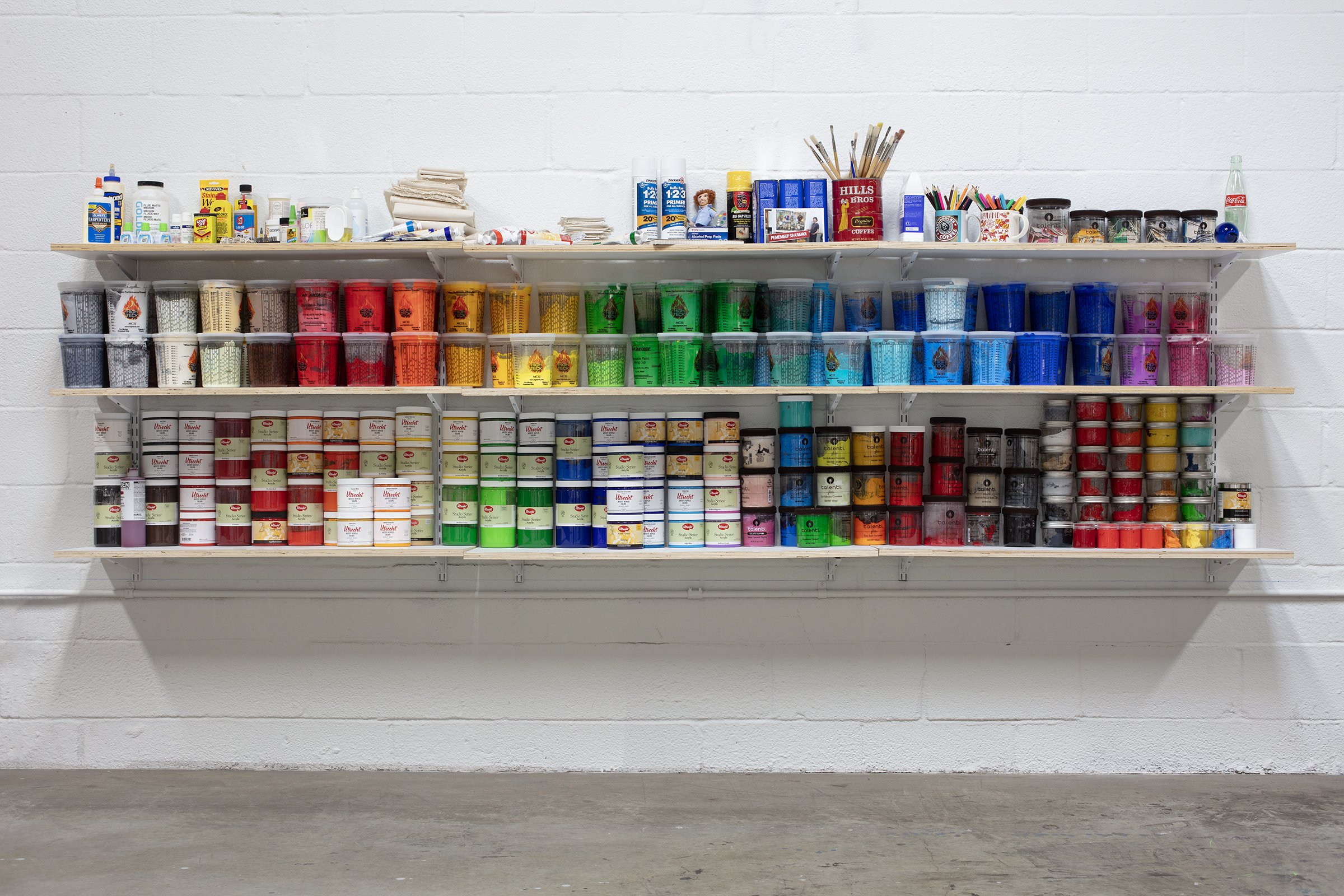 Image 1 of 3
Image 1 of 3

 Image 2 of 3
Image 2 of 3

 Image 3 of 3
Image 3 of 3




Mark Kelner: New American Landscapes, Exhibition Catalog, 2024
Published in tandem with the opening of New American Landscapes at the American University Museum in Washington, DC, this 86 page catalog of the same title features an essay by Reilly Davidson titled, “Los Angeles, the Cult of Commodity, and New American Landscapes,” and an interview with the artist edited by art historian Ariana Kaye. Profusely illustrated with 26 full color images and reproductions of source materials, this catalog is being sold exclusively here and at American University Museum. New American Landscapes was exhibited from September 7 through December 8, 2024.
New American Landscapes explores a broader argument for understanding what nature, environment, and landscape are in contemporary art right now. As an artist who identifies as “writerly” in his approach to all things visual, who is to say that Kelner’s paintings, sourced from artifice, are any less earnest than what we consider to be still lifes or traditional landscapes? Above all, how do we define what a landscape is in the digital age, an era of forever text enabled by our smartphones? What is “art” supposed to look like in the time of alternative facts? And who, in reality, is the audience for this socially impactful work that engages viewers conceptually, emotionally, and physically?
Imagine walking into Times Square, but instead of neon lights and videos thrust upon you, a viewer is immersed in 26 painterly recreations of strip mall signs with thick impasto, saturated colors, bold lettering, and unintentional graphic design, remade as purposeful and highly stylized works of art. The idea here is a simple one: in the suburbs he grew up in, these signs are for Kelner, the equivalent of trees, if not markers of time.
In his paintings, Kelner isolates the raw material of collective signage, suggesting that they are really about a changing national identity—who we are by what we eat and how we consume. Kelner explores how that can be expressed visually with multiple uses of text, typography, various languages, collage, and clip art logos. “In short,” says the artist, “my own family’s immigrant experience as told through the lens of what I and the audience see on the street.” To a suburban kid on his Huffy, such signs or totems are the “New American Landscapes.”
Published in tandem with the opening of New American Landscapes at the American University Museum in Washington, DC, this 86 page catalog of the same title features an essay by Reilly Davidson titled, “Los Angeles, the Cult of Commodity, and New American Landscapes,” and an interview with the artist edited by art historian Ariana Kaye. Profusely illustrated with 26 full color images and reproductions of source materials, this catalog is being sold exclusively here and at American University Museum. New American Landscapes was exhibited from September 7 through December 8, 2024.
New American Landscapes explores a broader argument for understanding what nature, environment, and landscape are in contemporary art right now. As an artist who identifies as “writerly” in his approach to all things visual, who is to say that Kelner’s paintings, sourced from artifice, are any less earnest than what we consider to be still lifes or traditional landscapes? Above all, how do we define what a landscape is in the digital age, an era of forever text enabled by our smartphones? What is “art” supposed to look like in the time of alternative facts? And who, in reality, is the audience for this socially impactful work that engages viewers conceptually, emotionally, and physically?
Imagine walking into Times Square, but instead of neon lights and videos thrust upon you, a viewer is immersed in 26 painterly recreations of strip mall signs with thick impasto, saturated colors, bold lettering, and unintentional graphic design, remade as purposeful and highly stylized works of art. The idea here is a simple one: in the suburbs he grew up in, these signs are for Kelner, the equivalent of trees, if not markers of time.
In his paintings, Kelner isolates the raw material of collective signage, suggesting that they are really about a changing national identity—who we are by what we eat and how we consume. Kelner explores how that can be expressed visually with multiple uses of text, typography, various languages, collage, and clip art logos. “In short,” says the artist, “my own family’s immigrant experience as told through the lens of what I and the audience see on the street.” To a suburban kid on his Huffy, such signs or totems are the “New American Landscapes.”
